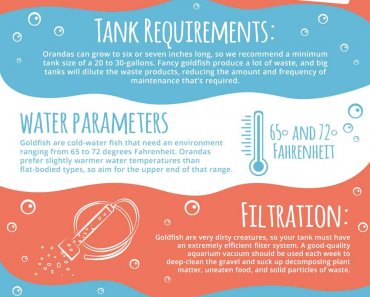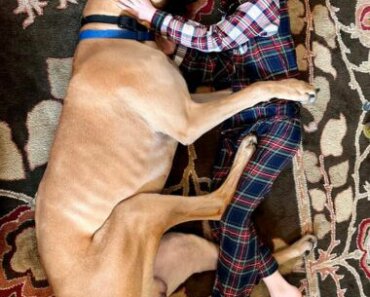A wide variety of health problems in dogs, from allergies to kidney disease, respond well to acupuncture. Here’s a look at the most common conditions this ancient healing modality can help treat.
When it comes to alternative therapies for dogs, acupuncture is one of the most well-known, even among those who use those and practice mainstream medicine. It’s not surprising, considering how long acupuncture has been around – and how effective it can be in the treatment of a wide range of health problems in our canine companions. This article focuses on the most common conditions in dogs that acupuncture can help with.
Dogs respond well to acupuncture
Acupuncture is an effective treatment for dogs. In, fact, many clients who seek acupuncture therapy for their dogs have reached an impasse with traditional veterinary medicine when it comes to solving a chronic problem, or they have found that their dogs cannot tolerate the traditional medications used to treat disease.
The most common conditions to be treated with acupuncture include musculoskeletal problems such as pain from osteoarthritis, hip dysplasia, and ACL tears; mobility problems such as paresis or paralysis; gastrointestinal disorders; allergies and immune system disorders; and chronic kidney disease. While most dogs will react slightly when an acupuncture needle is inserted, many will sleep or become very tranquil once the needles are in place.
Back pain
Dogs with back pain commonly have decreased range of motion in their leg joints, and sore muscles due to tension and spasms. By inserting acupuncture needles, the stimulation of nerves at points deep in the musculature along the spine will cause a release of endorphins, opioid peptides that decrease pain transmission along nerves. In cases of intervertebral disc disease, both pain control and nerve regeneration may be achieved using acupuncture. The needles have a local effect on muscle spasms and pain, but also stimulate nerves that travel to the spinal cord and brainstem to provide pain relief.
Osteoarthritis pain
Treatment of osteoarthritis pain in specific joints can be accomplished by inserting acupuncture needles in “local points” surrounding the joint. Tissue microtrauma from needle insertion triggers a release of chemicals that cause increased blood and lymph flow to the area. This causes blood vessel dilation, which increases the local immune response, bringing oxygen-carrying red blood cells and immune-responsive white blood cells to heal and repair damaged tissues. Additionally, muscles and tissues in the surrounding area will relax, leading to decreased pain.
 Allergies
Allergies
Inhaled allergies in dogs, also called atopy, can be particularly difficult to treat. A multimodal approach is required to provide relief. Allergies are a breakdown of an out-of-balance immune system reacting excessively to innocuous antigens. A deficient response by the immune system to an antigen may result in recurrent infections; up to 80% of dogs with allergies develop secondary skin infections.
By using known acupuncture points, balance can be restored to the immune system; commonly-used points include LI-4 and LI-11 on the front legs, ST-36 on the hind legs, and GV-14 on the midline over the shoulders. Allergies can be difficult to treat, requiring months or years to alleviate. Avoiding known allergens, making dietary and environmental changes, and incorporating herbal therapy may be required along with acupuncture.
Gastrointestinal problems
Gastrointestinal diseases may result in vomiting and diarrhea secondary to food allergies, inflammatory bowel disease, motility disorders, or aging changes. The stomach, intestines, pancreas, and liver are all involved in the digestion of food. Any of these organs can be out of balance, requiring treatment with acupuncture. The veterinarian will first determine where the imbalance resides within the body, then rebalance using acupuncture to heal the problem.
Dogs with blood or mucus in the vomitus or stool are suffering from too much heat in the body (excess Yang) while those passing watery gray stool with undigested food have too much moisture (excess Dampness) and weak digestion. The first condition would be treated with acupuncture points to drain heat, while the second would be treated with acupuncture points to drain the Dampness and warm the body.
 Dietary changes to suit the above Traditional Chinese Veterinary Medicine (TCVM) patterns should be instituted along with acupuncture treatments. Home-prepared, human-grade foods are preferred, as the diet can be individualized for each patient. Herbal therapy may also be warranted.
Dietary changes to suit the above Traditional Chinese Veterinary Medicine (TCVM) patterns should be instituted along with acupuncture treatments. Home-prepared, human-grade foods are preferred, as the diet can be individualized for each patient. Herbal therapy may also be warranted.
Kidney disease
Kidney disease in dogs may be acute or chronic. Acute kidney disease may result from the ingestion of toxins, poisons, or medications, as well as infection, or decreased blood flow to the kidneys secondary to shock or organ failure. Chronic kidney disease is more common, and is due to aging, chronic disease, or exposure to external pathogens.
Unfortunately, chronic kidney disease may not be detected until its late stages as the symptoms may be more subtle. Increased thirst and urination, decreased appetite, vomiting, and bad breath may be signs of disease, but symptoms of failure are not seen until approximately 75% of the kidney tissue is nonfunctional. Annual or semi-annual lab work including blood chemistries and urinalysis should be performed to determine early signs of decreased kidney function.
No conventional or alternative medical treatment can reverse chronic kidney disease, as the disease involves the death of kidney cells with replacement by scar tissue. The rate of progression in any individual dog may be slowed, but not stopped, by various treatments.
Acupuncture can help slow disease progression by decreasing blood pressure associated with kidney disease, improving urine flow, decreasing inflammation, strengthening the hind end, and eliminating incontinence. Common acupuncture points for treating chronic kidney disease include BL-23, KI-3, KI-7, and KI-10.
Some dogs will have dry nose, foot pads, and coat, with excessive thirst and panting. Others may drink little, be urine or stool incontinent, have weakness in the hind end, and seek warmth. Acupuncture points would be chosen to fit the pattern the individual dog is showing.
Dietary changes would also be appropriate for dogs with chronic kidney disease, along with herbal formulas to suit the TCVM pattern diagnosis.
Acupuncture is an important tool in the medical toolbox utilized by holistic and integrative veterinary practitioners. While the conditions discussed above are the ones most commonly treated with acupuncture, many others could be added to the list. Don’t overlook this powerful modality!




























